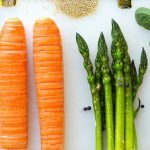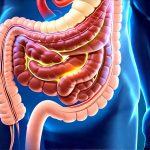Bloating is an incredibly common experience, often dismissed as simply “part of life.” However, for those transitioning to – or maintaining – a predominantly raw food diet, bloating can present in ways that are distinctly different, even unexpected. It’s not always the immediate, obvious gas associated with certain foods. Instead, it can manifest as persistent abdominal distension, feelings of fullness after eating very little, and fluctuations in digestive comfort that don’t seem to correlate directly with food intake. Understanding these unusual patterns isn’t about identifying “bad” raw foods, but rather about understanding the complex interplay between dietary changes, gut microbiome adaptation, and individual sensitivities. It requires a nuanced approach, moving beyond generic advice and focusing on personalized observation and adjustments.
The shift to a raw food diet introduces significant changes in fiber intake, enzymatic demands, and overall digestive workload. Our bodies are accustomed to processing cooked foods, which have already undergone some degree of “pre-digestion” through heat. Raw foods, by contrast, require more extensive breakdown. This increased demand can initially overwhelm the digestive system, leading to fermentation and gas production – a common cause of bloating. But beyond this initial adjustment period, many individuals experience persistent or fluctuating bloating that points to deeper issues. These aren’t necessarily signs of incompatibility with raw food; they’re signals from the body indicating a need for further investigation into how the diet is being implemented and what specific factors are at play within an individual’s unique digestive landscape. The role of hormones can also contribute to these patterns.
The Fiber Paradox & Digestive Capacity
Raw foods, by their very nature, are incredibly rich in fiber – both soluble and insoluble. While fiber is undeniably beneficial for gut health, promoting regularity and feeding beneficial bacteria, a sudden influx can be problematic. The key isn’t necessarily reducing fiber intake (unless medically indicated), but rather gradually increasing it and ensuring adequate digestive capacity to process it. Insoluble fiber adds bulk to stool and speeds up transit time, which is generally helpful, but too much too quickly can lead to discomfort. Soluble fiber ferments in the gut, producing gases as a byproduct; this is normal to a degree, but excessive fermentation causes bloating. The paradox lies in needing sufficient fiber for optimal health while avoiding overwhelming the digestive system with an amount it isn’t equipped to handle. Stool changes can also indicate issues with fiber intake.
The ability to digest fiber effectively depends on several factors: adequate hydration (fiber absorbs water), sufficient enzymes (both those naturally present in food and those produced by the body), and a healthy gut microbiome capable of breaking down complex carbohydrates. A diet overly reliant on specific high-fiber foods like large quantities of raw kale or cruciferous vegetables, without balancing them with easier-to-digest options like ripe fruits or soaked nuts/seeds, can exacerbate bloating. Furthermore, chewing food thoroughly is paramount; it initiates the digestive process and reduces the workload further down the line.
A crucial aspect often overlooked is individual enzyme production. Some people naturally produce less of certain enzymes needed to break down specific plant compounds found in raw foods. This deficiency can lead to incomplete digestion and increased fermentation. Supplementing with broad-spectrum digestive enzymes might offer temporary relief, but it’s essential to address the underlying cause – potentially through dietary adjustments or investigating malabsorption issues with a healthcare professional. Focus on building a diverse range of easily digestible raw foods into your diet. Loose stools can sometimes accompany enzyme deficiencies.
Addressing Bloat Through Food Combining & Sequencing
Food combining principles, while controversial in mainstream nutrition, can be particularly relevant for individuals experiencing bloating on a raw food diet. The idea is to minimize digestive conflict by avoiding certain combinations that are difficult to break down simultaneously. This isn’t about strict rules, but rather mindful pairings. For instance:
– Combining fruits with other foods (especially proteins or fats) often leads to fermentation as fruit digests quickly and the others take longer. Eating fruit separately can significantly reduce bloating.
– Pairing large amounts of starchy vegetables (like potatoes) with high-fat nuts/seeds can slow down digestion, leading to discomfort.
Food sequencing – the order in which foods are eaten during a meal – is equally important. Starting with more easily digestible foods like fruits or leafy greens prepares the digestive system for heavier items. Ending with something light and easy aids in overall processing. This approach isn’t about restriction; it’s about optimizing digestion by reducing burden on the gut. It allows your body to efficiently break down food, minimizing fermentation and gas production. Bathroom urgency can be reduced with careful sequencing.
The principle of mindful eating extends beyond combining and sequencing. Eating slowly, chewing thoroughly, and paying attention to hunger/fullness cues all contribute to better digestion. Stress also plays a significant role; when stressed, our bodies divert energy away from digestive processes, hindering efficient breakdown and absorption. Incorporating stress-reducing practices like deep breathing or meditation can therefore indirectly impact bloating.
The Role of the Gut Microbiome & Fermentation
The gut microbiome – the trillions of bacteria residing in our intestines – is a critical factor in raw food digestion. Raw foods provide abundant prebiotics, essentially “food” for beneficial bacteria, which supports their growth and diversity. However, an imbalance in the microbiome (dysbiosis) can lead to excessive fermentation and bloating. An overgrowth of certain bacterial strains produces more gas as a byproduct. This isn’t necessarily a sign of a “bad” gut; it often indicates that the ecosystem needs support in rebalancing itself. Stool texture can change with microbiome shifts.
Supporting the gut microbiome involves:
1. Consuming fermented raw foods like sauerkraut or kimchi (if tolerated) – these introduce beneficial bacteria directly.
2. Including diverse fiber sources to feed different bacterial species.
3. Avoiding excessive sugar intake, which can promote the growth of undesirable bacteria.
Bloating can sometimes be a sign of Small Intestinal Bacterial Overgrowth (SIBO), where an abnormal amount of bacteria resides in the small intestine. SIBO is a complex condition that requires diagnosis and treatment by a healthcare professional. Trying to self-treat with probiotics or dietary changes may not always be effective, and could even worsen symptoms.
Hydration & Mineral Balance: Often Overlooked Factors
Dehydration significantly exacerbates bloating, particularly when consuming high-fiber raw foods. Fiber absorbs water, and if sufficient fluid isn’t present, it can lead to constipation and increased fermentation as food sits longer in the digestive tract. Adequate hydration is not merely drinking enough water; it’s also ensuring electrolyte balance. Minerals like sodium, potassium, and magnesium are crucial for proper digestion and fluid absorption. A raw food diet, while nutrient-dense, may sometimes lack sufficient electrolytes if relying heavily on low-mineral foods.
Electrolyte imbalances can disrupt digestive function and contribute to bloating. Symptoms of magnesium deficiency, for example, include muscle cramps, fatigue, and constipation – all of which can indirectly worsen bloating. Incorporating mineral-rich raw foods like dark leafy greens (spinach, kale), avocados, and soaked seeds/nuts is important. Adding a pinch of sea salt to water or incorporating electrolyte-rich beverages (like coconut water) can also be beneficial. Constipation often accompanies dehydration.
Furthermore, the absorption of certain minerals can be hindered by phytates found in some raw foods (seeds, grains, legumes). Soaking these foods prior to consumption reduces their phytate content and improves mineral bioavailability. It’s a simple step that can make a significant difference in digestive comfort and overall nutrient uptake. Ultimately, addressing bloating on a raw food diet requires a holistic approach – considering fiber intake, gut health, hydration, and mineral balance as interconnected components of a healthy digestive system. Cramping and bloating can be exacerbated by imbalances in these areas.


















